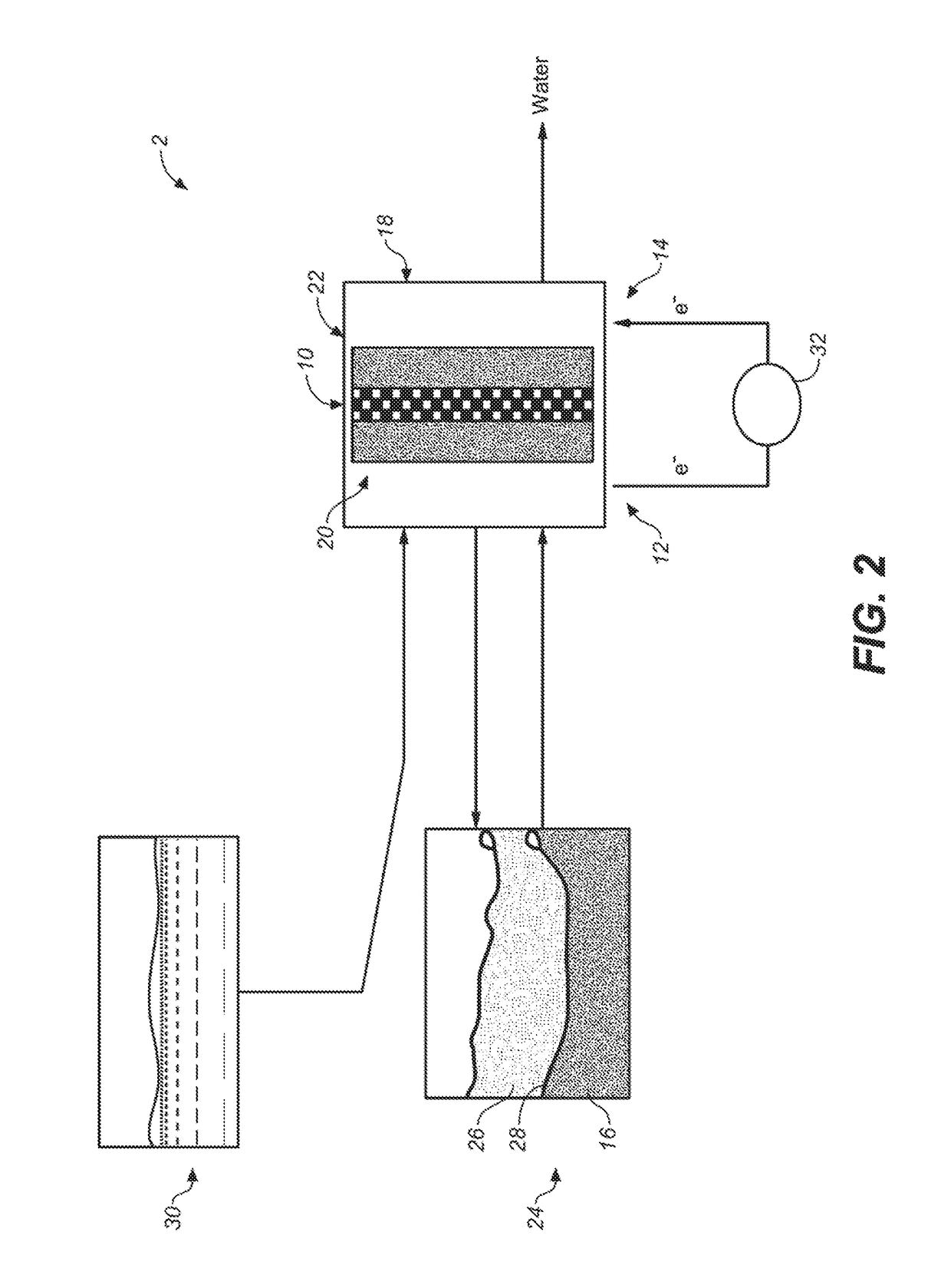System and method for electrochemical energy conversion and storage
a technology of energy conversion and electrochemical energy, applied in the field of energy storage systems, can solve the problems of limited implementation of such a “hydrogen economy, the design of a catalytic fuel-dehydrogenation reactor system that delivers hydrogen on demand from any lohc is itself a major engineering challenge and very costly
- Summary
- Abstract
- Description
- Claims
- Application Information
AI Technical Summary
Benefits of technology
Problems solved by technology
Method used
Image
Examples
examples 1-4 (
Computationally-Based)
Example 1
[0088]Electrochemical oxidative dehydrogenation of a mixture of perhydrogenated benzyltoluene isomers to a mixture of benzyltoluene isomers (for the estimation of ΔS, computationally modelled as 3-benzyltoluene).
[0089]Referring to compositions and structures in FIG. 1:
[0090]Composition of Structure 1 with R1═CH3 as the only ring substituent and X═—CH2—, +3O2→Composition of Structure 2 with R1′═CH3 as the only ring substituent and X′═—CH2—, +6H2O: ΔG0=−1208 kJ / mole,*. Open circuit voltage (OCV)=1.259 V (n=12) Energy Density=6.215 kJ / gram or 1726 Wh / kg for the perhydrogenated benzyltoluene isomers / mixture of benzyltoluene isomers molecule pair.
*Estimated from Δ10 (gas) experimental data of perhydrobenzyltoluene, labeled as 12H MLH in Mueller et al., Eng. Chem. Res. 2045, 54, 79, and an entropy, ΔS (gas) taken from the SSPD data base, calculated at the EFD2 / 6-31G* level, from the SPARTAN™ 2016 Quantum Chem. Package (Wavefunction Inc.). Using the Δf0 (liqu...
example 2
[0091]A mixture of the same perhydrogenated benzyltoluene isomers as in Example 1 is converted to a mixture of benzyltoluene isomers and, in addition, the methylene group is selectively oxidized to a carbonyl group:
Structure 1 with R1=methyl (CH3) and X=methylene (—CH2—), +4O2→Structure 2 where now X′
is a bridging carbonyl, C(O)+7H2O; ΔG0=−1564 kJ / mole; OCV=1.013 V (n=16)
Energy density=8.047 kJ / gram or 2235 Wh / kg, for the perhydrogenated benzyltoluene isomers / mixture of benzoyltoluene isomers molecule pair.
The oxidation of the bridging methylene to a bridging carbonyl results in a 29% increase in energy density, or maximum energy storage capacity of the fuel.
example 3
[0092]As for Example 2, with in addition, a selective electrochemical oxidation of the methyl group to an aryl carboxylic acid group (—COOH):
Structure 1 with R1=methyl (CH3), X═—CH2—+5.5O2→Structure 2 where X′═C(O) and R1′═COOH; ΔG0=−2122 kJ / mole, OCV=1.0 V (n=22) Energy density 10.92 kJ / gram or 3030 Wh / kg
[0093]The oxidation of the methyl group to a carboxylic acid group provides an additional 35% increase in energy density. The two oxidation steps result in a total 75% increase in the energy storage capacity of the original fuel. A selective oxidation of added functional groups (R2 to R4) may be expected to lead to further enhancements in electrochemical energy storage capacity of the fuel.
PUM
 Login to View More
Login to View More Abstract
Description
Claims
Application Information
 Login to View More
Login to View More - R&D
- Intellectual Property
- Life Sciences
- Materials
- Tech Scout
- Unparalleled Data Quality
- Higher Quality Content
- 60% Fewer Hallucinations
Browse by: Latest US Patents, China's latest patents, Technical Efficacy Thesaurus, Application Domain, Technology Topic, Popular Technical Reports.
© 2025 PatSnap. All rights reserved.Legal|Privacy policy|Modern Slavery Act Transparency Statement|Sitemap|About US| Contact US: help@patsnap.com



